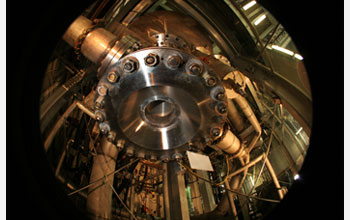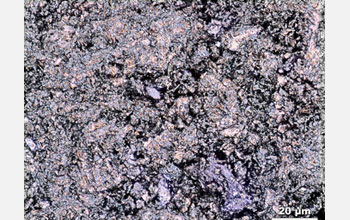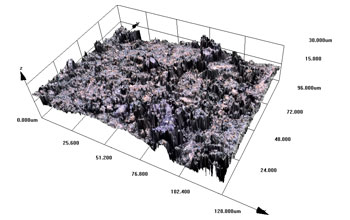All Images
News Release 08-085
Hold the Old Lace: Arsenic and Iron Material Is a Remarkable Superconductor
New class of superconducting material could help reveal the mechanism of superconductivity at higher temperatures
This material is available primarily for archival purposes. Telephone numbers or other contact information may be out of date; please see current contact information at media contacts.

At the National High Magnetic Field Laboratory (NHMFL) at Florida State University, the 45-tesla hybrid magnet produces the highest field of any continuous field magnet in the world. This and other magnets at the lab are used for a wide array of research across many scientific fields, and are essential for probing the mysteries of nature that lead to new materials and technology. Scientists at NHMFL explore areas such as superconductivity, with its potential to revolutionize the electric power industry; support the development of life-saving new drugs; and enable basic research that could lead to advanced quantum computers.
Credit: Florida State University
Download the high-resolution JPG version of the image. (4.6 MB)
Use your mouse to right-click (Mac users may need to Ctrl-click) the link above and choose the option that will save the file or target to your computer.

The discovery of a new class of materials that exhibit superconductivity at relatively high temperatures has created a great flurry of activity to understand these new superconductors. Above is a hybrid scanning laser plus color confocal microscope image of cleaved fluorine-doped lanthanum oxide iron arsenide sample. The sample has multiple phases and a micron-scale grain size.
Credit: Peter Lee of the Florida State University, Applied Superconductivity Center at the National High Magnetic Field Laboratory
Download the high-resolution JPG version of the image. (1.2 MB)
Use your mouse to right-click (Mac users may need to Ctrl-click) the link above and choose the option that will save the file or target to your computer.

Researchers at the NHMFL use powerful magnets to explore how the superconductivity in a new superconducting material is weakened by magnetic fields. They are finding that these new iron-arsenic materials are less susceptible to the weakening effects of magnetic fields than conventional wisdom would have predicted, suggesting that these iron-arsenic compounds enable an entirely new kind of superconductivity. Here, a scanning laser confocal microscope generated image shows the surface of a cleaved fluorine-doped lanthanum oxide iron arsenide sample. The sample has multiple phases and a micron-scale grain size.
Credit: Peter Lee of the Florida State University, Applied Superconductivity Center at the National High Magnetic Field Laboratory
Download the high-resolution JPG version of the image. (376 KB)
Use your mouse to right-click (Mac users may need to Ctrl-click) the link above and choose the option that will save the file or target to your computer.


